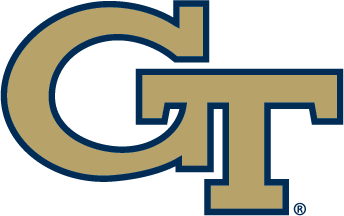May 22, 2017
This story originally appeared in the Spring edition of BUZZ magazine. Click here to read the entire magazine and to subscribe.
By Jon Cooper | The Good Word
What an amazing time in which we live!
Everybody has aptly named smartphones, which can do so many things that simply calling and talking to another person on it is one of the least-used aspects of it.
Imagine, then, what an amazing time it is to be a student-athlete at Georgia Tech!
Required to perform at the highest level, Yellow Jacket student-athletes can prepare using top-of-the-line technology that can analyze every action and move, correct every facet of their game and track their physical state so they can perform at their best and help coaches get the most out of their charges.
Among the most important apparatus employed by training staffs at both the Zelnak Center and the Hugh Spruill Strength Center is GPS technology — the basketball, volleyball and tennis teams who train at Zelnak use Polar Team Pro System by a company called Polar USA, while football and most all other sports that train at Spruill use Viper by StatSports, a Dublin, Ireland-based company.
The same technology that gets drivers from Point A to Point B puts Yellow Jacket athletes on the road to success.
Small enough to fit inside a pocket of a vest the players wear while working out (it’s 3.5 inches tall by 1.5 inches wide), the Viper can measure a variety of categories, from distance, speed, acceleration, deceleration, sprints, collisions and dynamic stress loads. Football also is experimenting with a similar device called Catapult, which originated in Australia in 2006.
The idea is to measure data, then, through an algorithm, create workouts to improve the athletes.
“You want them all to be explosive,” said fourth-year director of player development for football John Sisk, who has worked as a strength and conditioning coach for more than 25 years, including stints at Vanderbilt and Furman. “If we’re doing speed or a sprint you want to see how fast they cover ground but you also want to see how much distance guys are doing, how they’re recovering, not just from the load from week to week, but you have to add that data up year to year, and that’s going to change because they get stronger. It measures their max speed throughout the whole thing. We go through, and we timestamp everything they do throughout the whole practice. We can know where everybody is during training.”
“We look at the athletes’ training load for practice, conditioning, individuals and weights,” said Georgia Tech director of Olympic sport player development Scott McDonald, who is in his 20th year at Tech, working at Zelnak Center with the women’s basketball, women’s tennis and volleyball teams.
The data from the units is then uploaded and units have their own recharging stations.
As explosiveness differs from sport to sport, so does the method of improving it.
Tech’s men’s and women’s basketball and volleyball teams use the GymAware Power tool during their workouts. At around $2,200 per unit, GymAware can be attached to a platform or bar, and can be programmed to target up to 200 exercises.
“We can basically set up individualized performance targets. We can change the target speed based on what we’re trying to train that day,” said McDonald. “It’s a key performance indicator for power and speed, and we can also do jump-height on it as well. So we can attach this to a stick and have them perform body-weight jumps and kind of see where they are and how they’re recovering. Yes, we want to get stronger, but we also want to move the bar. Sport is explosive. We want you to move it explosively.”
Explosiveness is often associated with jumping. Men’s basketball player development coach Dan Taylor boasts a piece of equipment called the Optojump that can test and improve jumping skills.
Optojump, the creation of the Italian company Microgate and about 10 years old, is basically a pair of bars that are laid down parallel on the ground. Inside each bar is a series of LED lights. The athlete’s movements are measured as they run and jump. Ironically, research to improve the vertical has little to do with what happens in the air.
“Optojump is a way of monitoring everything you do on the ground within a given area,” said Taylor, a self-taught fitness fanatic, who played basketball at D-II Franklin Pierce College before entering the field of athletic training, serving as head strength and conditioning coach for nine years at Siena, then joining coach Josh Pastner’s staff. “The best athletes in the world use the ground most efficiently. They’re getting force from the floor and they’re moving quickly. They don’t waste footsteps. They don’t waste time on the floor. “
Optojump begins measuring data immediately once an athlete leaves the ground and breaks the LED light beam.
“The fact that I can have a piece of fairly simple apparatus that gives us really quick feedback about what is happening on the ground to me is very exciting, because that’s what you DON’T see,” Taylor said. “You see above the rim, and that’s exciting. I love dunks. But what happens on the floor can be really important to what Scott and I do, and that will enhance what happens above the rim.”
Of course, the highest priority is keeping athletes at their peak and on the floor. To that end is the program Omegawave.
The program, created in Finland in 1999, is a self-evaluation program for student-athletes that helps coaches gauge their readiness and physical state and set up practices and activities to get the most from their athletes.
“Omegawave is a way of measuring an athlete’s physiological preparedness,” said Taylor. “It’s kind of `how do you feel on a scale of 1 to 10.’ Let’s say `I feel like a 5, that’s about average.’ Or just simply `How do you feel?’ `I’m a little banged up.’ So that’s some kind of evaluation or some kind of communication with the athlete, because that’s important. That’s their perception of what’s going on.”
Omegawave can check the central nervous system, the cardiac system and the energy-supply system in about four minutes and can be done by simply laying on the floor, be it in the training room or their dorm room.
“It’s quite simple for them. It reads back to their phones,” Taylor said. “It connects to their forehead, through an electropad and the base of their phone. Then it reads their data for four minutes, which they’ll see on their phones.”
The information is automatically uploaded, where coaches and the training staff can track it. They can then increase the workload in practice or back players off in their work. More important, it can find trends in the players’ health — testing on the lower end for a number of consecutive days, for example, might mean there’s more going on than, say, exam anxiety.
“It could be that he’s dealing with some kind of stresses that we’re not aware of, and we can talk to him about that and see what it is,” Taylor said. “Maybe it’s `Okay, we’re going to shoot, and we’re going to go through film, but you’re not going to go through a full practice, and then we’ll work toward getting you back again.'”
While different sports require data of different skill sets, one criteria consistent for all is vision. That’s led to Georgia Tech’s use of the Vizual Edge Performance Trainer (VEPT).
“I’m a big proponent of Vizual Edge training because it helps enhance athletically, but it also helps if you have any visual issues,” said Sisk, who used the technology while at Vandy, with, amongst others, current Chicago Bears quarterback Jay Cutler. “It also corresponds to school. How they see things, how they process things in a classroom setting. When you see it you can process it, you can learn it, you can use it. I think it’s something that allows the athletes to have confidence in what they see. That’s one thing we’re going to continue to move forward with.”
Vizual Edge isn’t new. It actually predates the 1996 Atlanta Olympics.
“That’s something that I actually went through when I was [playing],” recalled Nick Scherer, in his 10th season as Georgia Tech baseball director of operations, who employed it during his playing days catching for the Yellow Jackets from 2004 through 2007. “I’m sitting there after I’ve called a slider, having trouble picking up the spin on it because my eyes were a little weak in certain muscles, being able to focus in on certain areas. In baseball, you’re trying to hit a round ball with a round bat, and that ball’s moving at 95 miles an hour with movement, and you have less than a second to react. So eye strain and eye control is huge for us. We definitely have started to work that back into the mix.”
Student-athletes use VEPT by putting on a pair of 3D glasses (paper frames with a red plastic lens on one side a blue plastic lens on the other) then perform the series of exercises to test areas like depth perception, flexibility, recognition and tracking. It’s convenient, as student-athletes can use it on their phones or iPads.
Convenience is a theme for all technology Tech’s training staff implements.
“Every coach in the country is fighting time,” said Sisk. “If you have 10 minutes in your room or traveling you can get 10 minutes of vision training to help putt better, to help hit the ball better, to help throw better, to help catch the ball better, to see the field better. All the information pops up on my screen. I can see how you did, how you’re doing, and I can come back and evaluate you myself.”
As technology continues to get better, the training staff needs to be very discerning.
“As a strength coach I try to look at a lot of things, at least kick the tires,” said Sisk. “You have to find what fits. What you can use day in and day out, and, with the number of athletes, is it worth the cost. We can spend $10,000 on 10 Catapult systems, or we can spend $10,000 and get every athlete visual screens to help them use the visual training. So you have to use your money wisely.”
New technology and equipment, however, continue to be developed and marketed, and Tech’s athlete development staff continues to keep up with those advances.









